Menu
Math Lesson 16.6.4 - Graph Method for Finding the Inverse of a Function
Please provide a rating, it takes seconds and helps us to keep this resource free for all to use
Welcome to our Math lesson on Graph Method for Finding the Inverse of a Function, this is the fourth lesson of our suite of math lessons covering the topic of Inverse Functions, you can find links to the other lessons within this tutorial and access additional Math learning resources below this lesson.
Graph Method for Finding the Inverse of a Function
Let's use a very simple example to explain how to obtain the graph of the inverse f - 1(x) of a given function f(x). For example, let's choose the function f(x) = 2x. We find the inverse function f - 1(x) as follows:
y = 2x
x = y/2
f-1 (x) = x/2
The following figure shows the graphs of the two functions f(x) and f - 1(x).
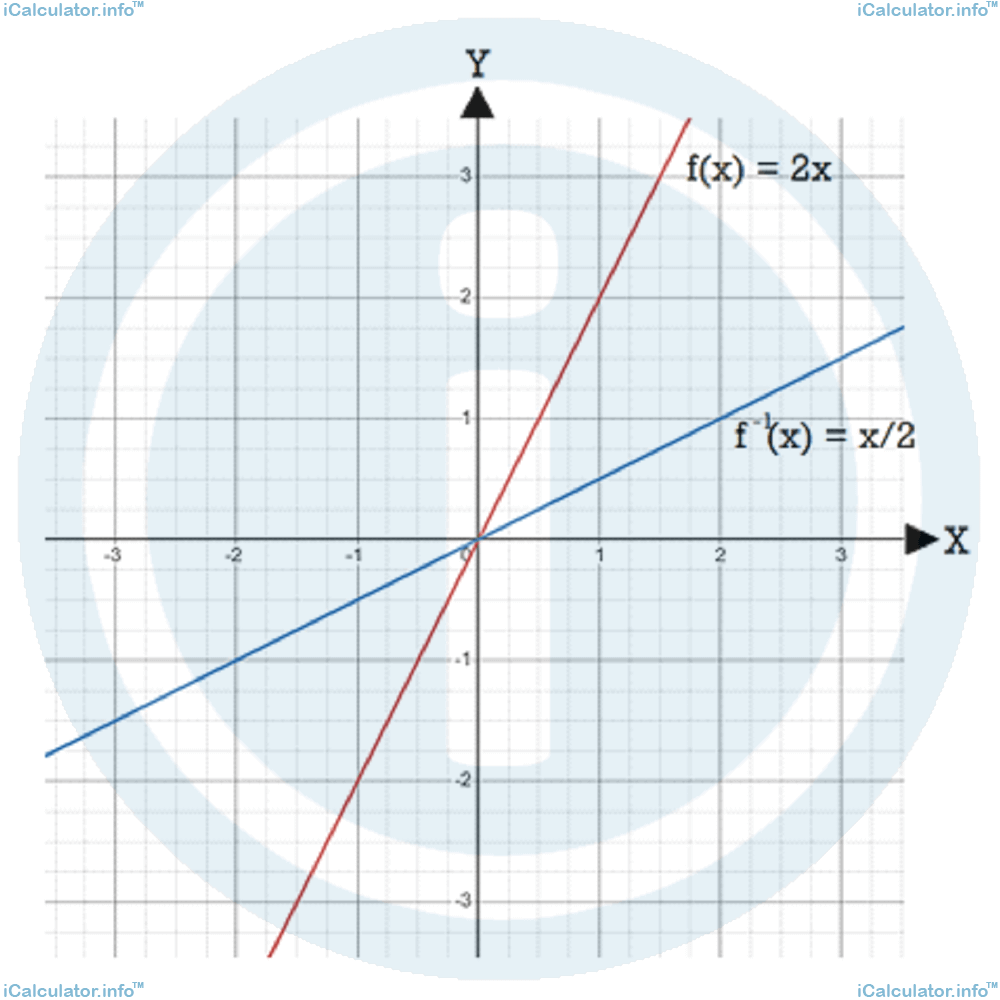
It is easy to see that the two functions are symmetrical to each other in respect to the line y = x, which acts as a symmetry line. Look at the figure below.
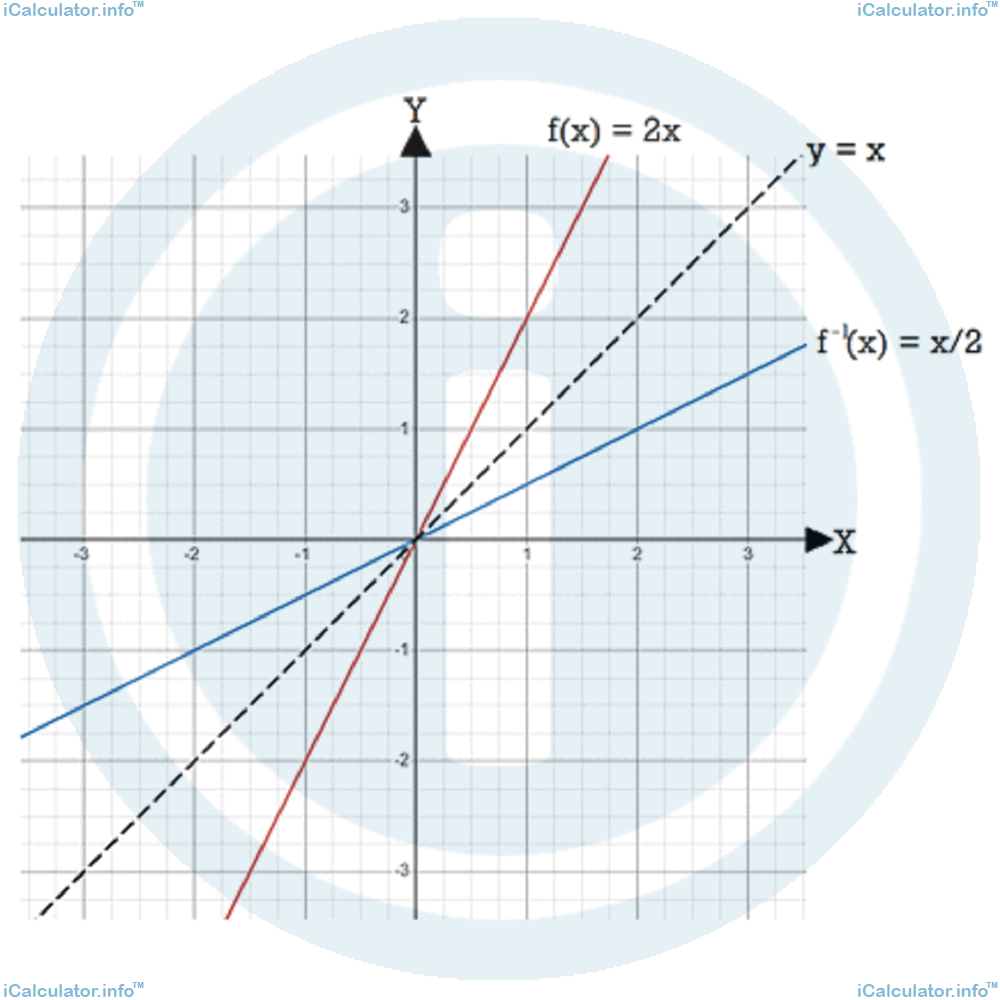
This property of the inverse function graphs, i.e. they are symmetrical to f(x) in respect to the line y = x is used for identifying the inverse of a function f(x) when its graph is given. Let's see an example in this regard.
Example 4
Use the symmetry to find the inverse of the function f(x) in the figure.
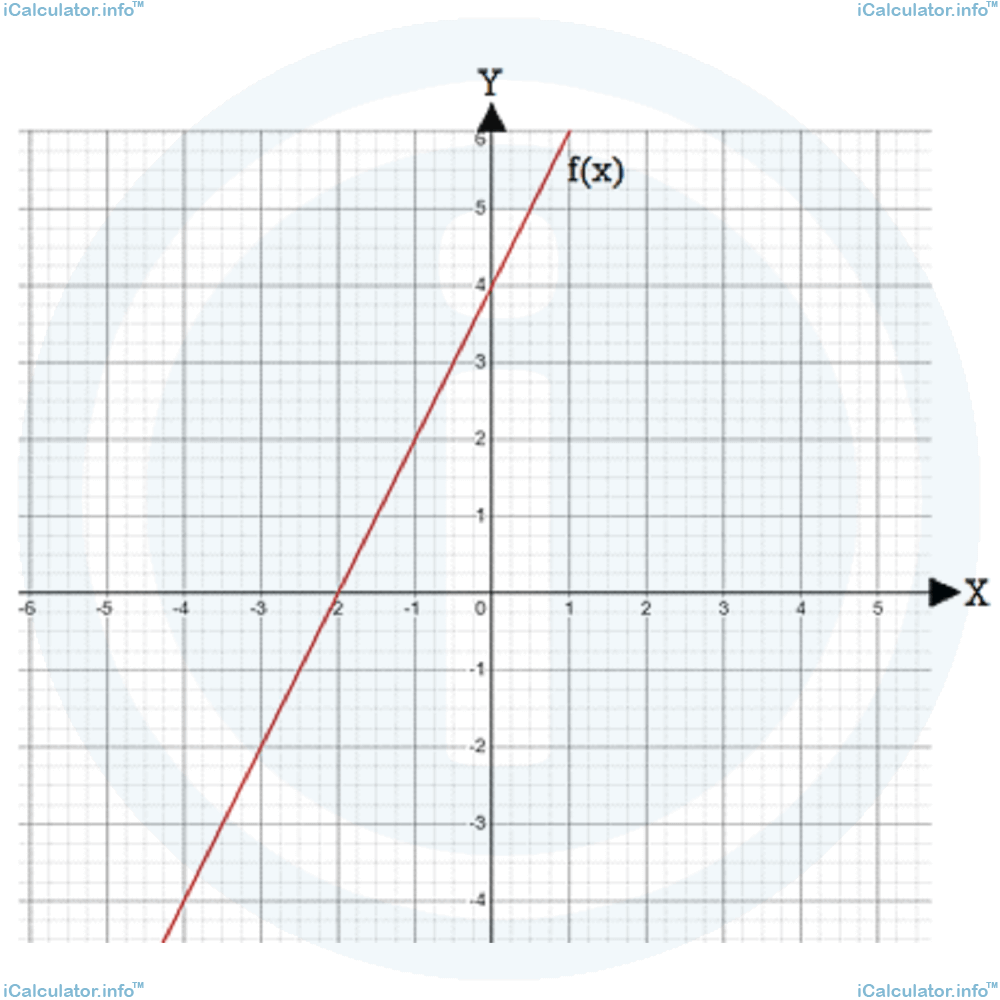
Solution 4
First, we have to plot the symmetry line y = x and see how close from it the graph of f(x) is at different points. Look at the figure below.
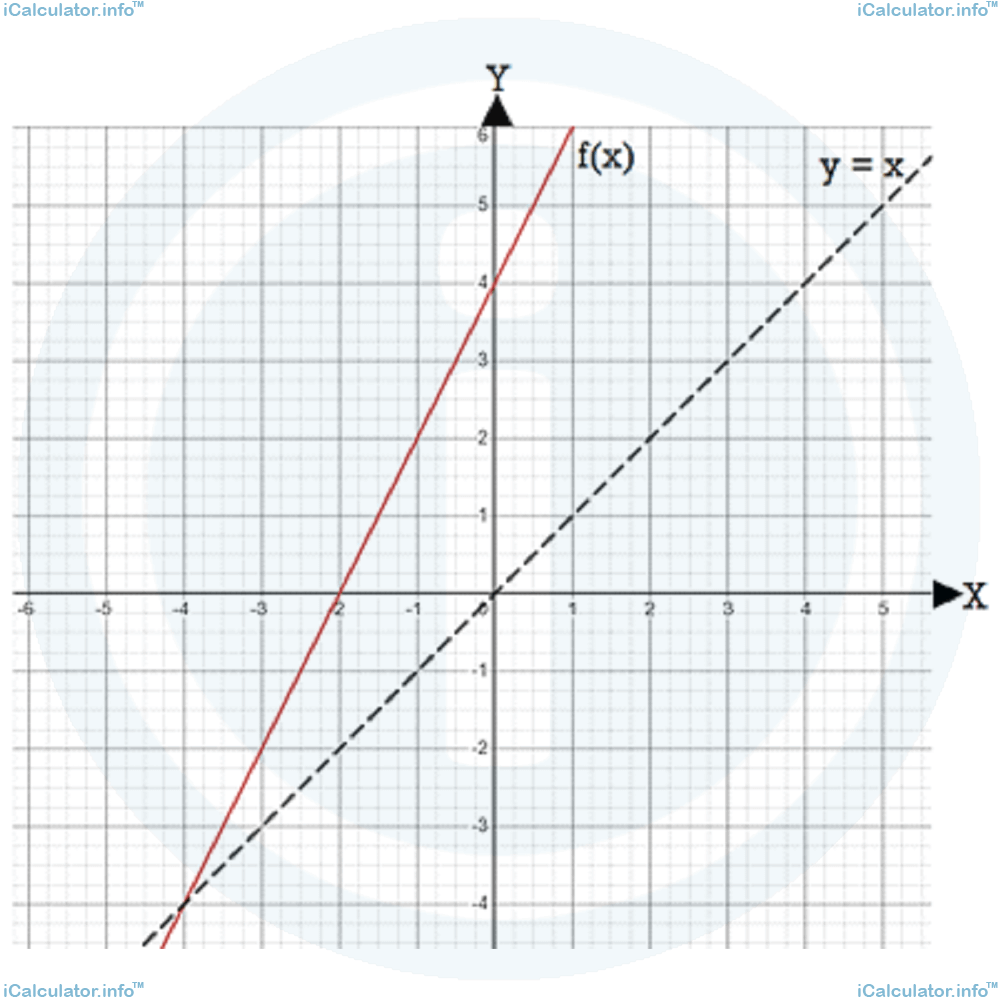
Let's focus on two points: at the intercept of the two lines [it is at (-4, -4)] and at the y-intercept of f(x), which is at (0, 4). The symmetry rules require that f - 1(x) have a common intercept with the two other lines, i.e. at (-4, -4). Moreover, the y-intercept of f(x) will correspond to the x-intercept of f - 1(x), i.e. at (4, 0). Therefore, we will obtain a new line for f - 1(x) passing through A(-4, -4) and B(4, 0), as shown in the figure below.
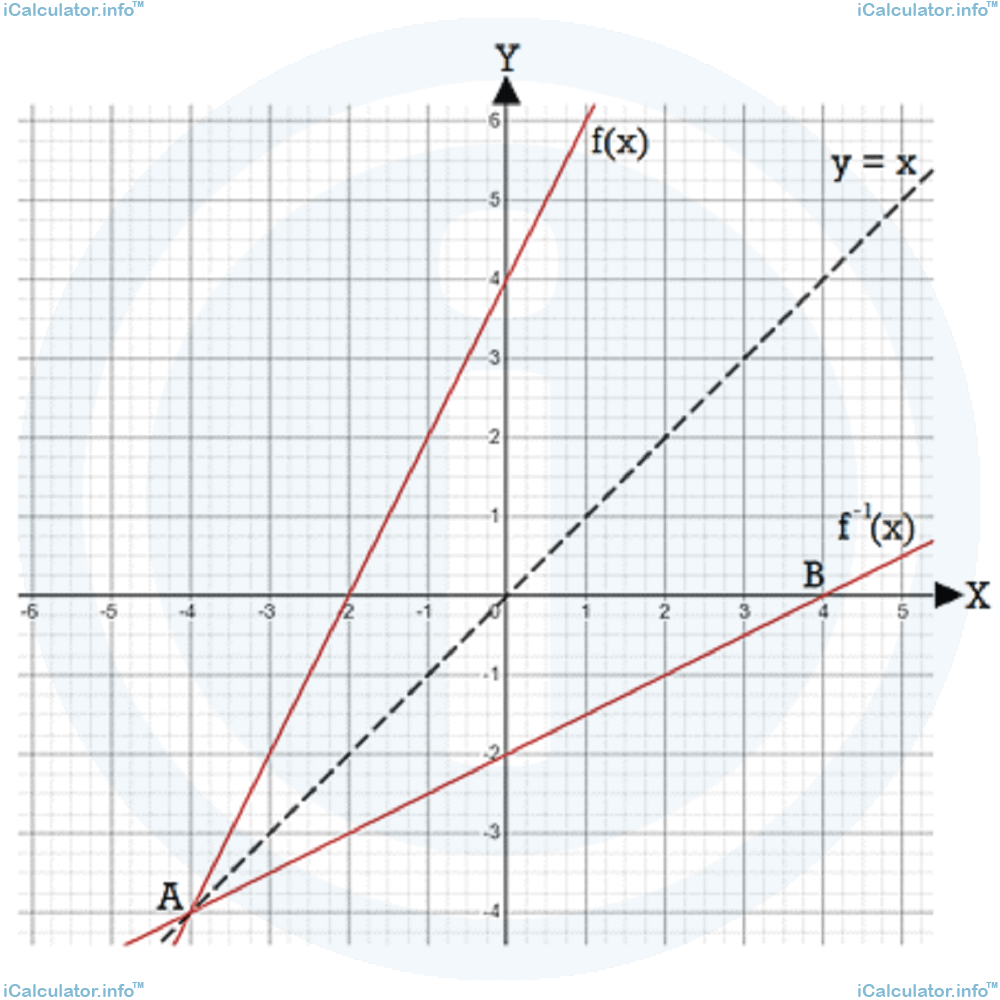
Now, let's find the equation of f - 1(x). Since two points of f - 1(x) are already known, we use the formula
to calculate its gradient. Substituting the known values yields,
= 4/8
= 1/2
Thus, the equation of f - 1(x) has the form
where n is a constant to be determined. Substituting the coordinates of any of the known points, for example those of point B(4, 0) in the above function yields
n = -2
Therefore, the formula of the inverse function f - 1(x) of the function f(x) shown in the figure is
Another method to identify the inverse of a function shown graphically is to first find the formula of the original function from the figure and then use any of the analytical methods described earlier in this tutorial for identifying the formula of the inverse function. This avoids the necessity to use the symmetry line y = x in the process. Let's consider the example below.
Example 5
Find the inverse of the functions f(x), g(x) and h(x) shown in the figure below by identifying the formulas of these functions first.
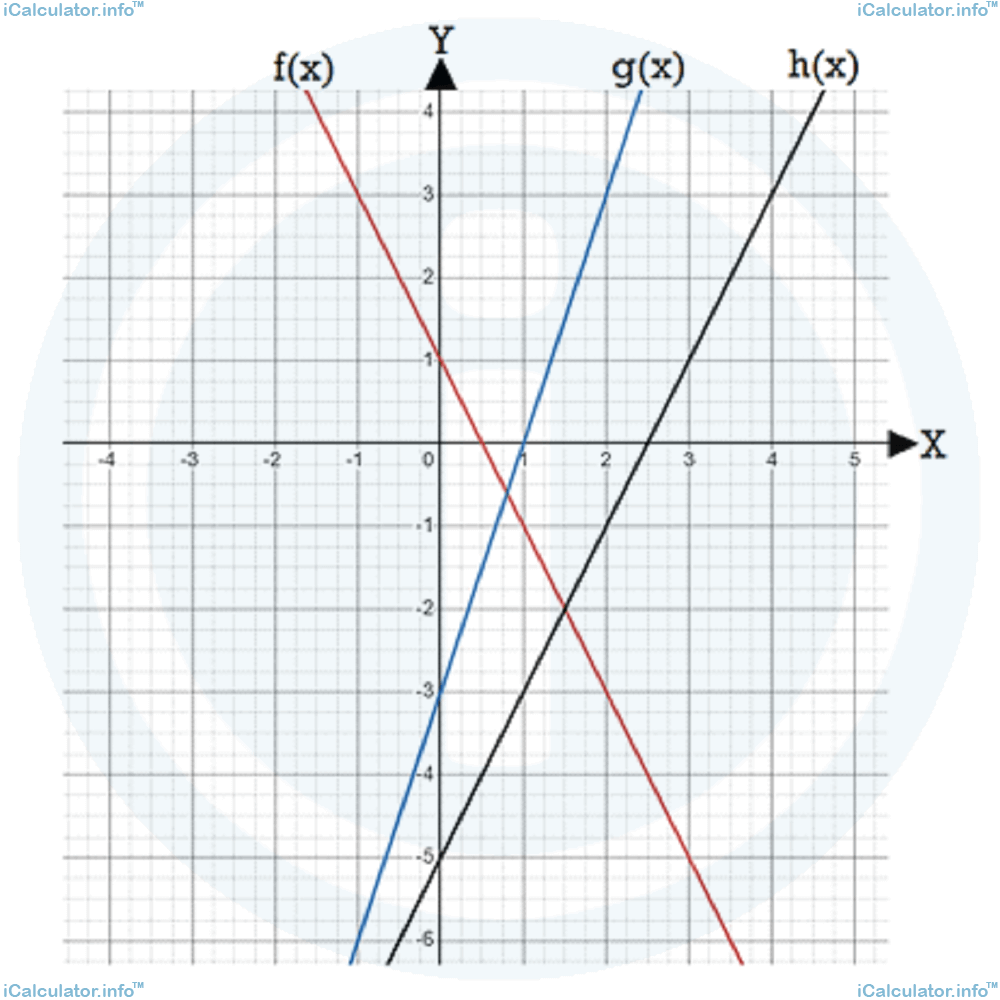
Solution 5
For all functions shown in the figure, we first identify two points in the graph; then we find the gradient using the known formula in the previous example; and finally, we find the constant n. The next step involves finding the formula of the corresponding inverse function by using any of the two analytical methods described in theory.
- We can identify two points in f(x); for example, (0, 1) and (3, -5). The gradient of this function is m = y2 - y1/x2 - x1Thus, in the formula
= -5 - 1/3 - 0)
= -6/3
= -2f(x) = -2x + nwe have to identify the constant n by substituting in it any known point of the graph, for example (0, 1). Thus,1 = -2 ∙ 0 + nHence, the formula of the function f(x) is
n = 1f(x) = -2x + 1Now, let's find the inverse function f - 1(x). We havef(x) = -2x + 1
-2x = f(x) - 1
x = -[f(x) - 1]/2
f-1 (x) = -x + 1/2
f-1 (x) = -x/2 + 1/2 - We can identify two points in g(x); for example, (0, -3) and (1, 0). The gradient of this function is m = y2 - y1/x2 - x1Thus, in the formula
= 0 - (-3)/1 - 0
= 3/1
= 3g(x) = 3x + nwe have to identify the constant n by substituting in it any known point of the graph, for example (1, 0). Thus,0 = 3 ∙ 1 + nHence, the formula of the function g(x) is
n = -3g(x) = 3x - 3Now, let's find the inverse function g - 1(x). We haveg(x) = 3x - 3
3x = g(x) + 3
x = g(x) + 3/3
g-1 (x) = x + 3/3
g-1 (x) = x/3 + 1 - We can identify two points in h(x); for example, (0, -5) and (3, 1). The gradient of this function is m = y2 - y1/x2 - x1Thus, in the formula
= 1 - (-5)/3 - 0
= 6/3
= 2h(x) = 2x + nwe have to identify the constant n by substituting in it any known point of the graph, for example (3, 1). Thus,1 = 2 ∙ 3 + nHence, the formula of the function h(x) is
1 = 6 + n
n = -5h(x) = 2x - 5Now, let's find the inverse function h - 1(x). We haveh(x) = 2x - 5
2x = h(x) + 5
x = h(x) + 5/2
h-1 (x) = x + 5/2
h-1 (x) = 1/2 x + 5/2
You have reached the end of Math lesson 16.6.4 Graph Method for Finding the Inverse of a Function. There are 6 lessons in this physics tutorial covering Inverse Functions, you can access all the lessons from this tutorial below.
More Inverse Functions Lessons and Learning Resources
Whats next?
Enjoy the "Graph Method for Finding the Inverse of a Function" math lesson? People who liked the "Inverse Functions lesson found the following resources useful:
- Graph Method Feedback. Helps other - Leave a rating for this graph method (see below)
- Functions Math tutorial: Inverse Functions. Read the Inverse Functions math tutorial and build your math knowledge of Functions
- Functions Revision Notes: Inverse Functions. Print the notes so you can revise the key points covered in the math tutorial for Inverse Functions
- Functions Practice Questions: Inverse Functions. Test and improve your knowledge of Inverse Functions with example questins and answers
- Check your calculations for Functions questions with our excellent Functions calculators which contain full equations and calculations clearly displayed line by line. See the Functions Calculators by iCalculator™ below.
- Continuing learning functions - read our next math tutorial: Even and Odd Functions
Help others Learning Math just like you
Please provide a rating, it takes seconds and helps us to keep this resource free for all to use
We hope you found this Math tutorial "Inverse Functions" useful. If you did it would be great if you could spare the time to rate this math tutorial (simply click on the number of stars that match your assessment of this math learning aide) and/or share on social media, this helps us identify popular tutorials and calculators and expand our free learning resources to support our users around the world have free access to expand their knowledge of math and other disciplines.